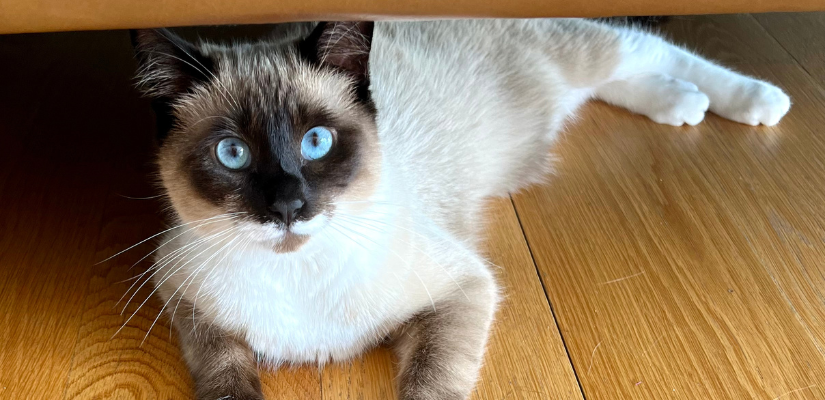From majestic lions roaming the African savannahs to mischievous ragdolls lounging on our couches, felines have captivated our hearts for centuries. Today, join us on a fascinating journey as we explore the origins of these enigmatic creatures, their intriguing history, and the diverse habitats they call home.
Where do cats come from, and where do they live now? Let’s explore the history of these beloved creatures – both in the wild and in our homes – and how they came to be our sleepy companions today.
Cat History – How did they become our beloved pets?
Cats are deeply entwined with human history, our interactions with them dating back thousands of years. Their origins can be traced to wildcat species that were once found in various regions across the globe. In ancient times, cats were revered and even worshipped by different civilisations for their mysterious and agile nature.
In ancient Egypt, for example, cats were highly regarded and often depicted in art and hieroglyphs. They were associated with the goddess Bastet, representing protection, fertility, and home life. Cats were also revered in ancient Mesopotamia, where they were believed to bring good luck and were considered symbols of freedom and guardianship.
The domestication of cats is believed to have started around 7500 BCE in the Near East, where wildcats gradually adapted to living near human settlements. Over time, humans began to value cats for their hunting skills, which helped control rodents, protecting valuable food supplies. This mutual benefit led to the development of a close bond between humans and cats, eventually leading to their domestication as companion animals.
The transformation of cats from wild, independent hunters to beloved companions has enriched the lives of millions of people worldwide. Cats are treasured for their companionship, affection, and unique personalities. The domestic cat’s popularity led to the species’ spread across the globe. Cats have become integral parts of households in various cultures, providing comfort and joy to people of all ages.
Feline Species Diversity
The world of cats is diverse, encompassing various wild and domesticated species. From majestic big cats to small and playful domestic cats, felines exhibit a wide range of characteristics and behaviours.
Wild cats are well adapted to their respective environments. From the powerful roars of lions to the agile leaps of cheetahs, each species has unique hunting techniques and social structures. Wildcats are often solitary animals, except for the social lions and some small cat species that form family groups.
Asia is home to some of the world’s most iconic wild cats, including the Bengal tiger, which roams the dense forests of India and Bangladesh. The majestic snow leopard inhabits the high-altitude mountain ranges of Central Asia. Asian wildcats, such as the fishing cat and the leopard cat, showcase the rich biodiversity of the region.
Africa is renowned for its big cats, with lions being a symbol of strength and pride. The continent also houses the fastest land animal, the cheetah, known for its incredible speed and agility. The African wildcat, a close relative of the domestic cat, can still be found in the savannahs of Africa.
The Americas are home to a diverse range of cats, including the elusive jaguar, which roams the dense rainforests of South America. Pumas, also known as cougars or mountain lions, have a widespread presence across North and South America. The ocelot, a small and beautiful cat species, inhabits Central and South American rainforests.
Exploring Cat Habitats
Cats have adapted to various environments, from wild to urban landscapes, showcasing their versatility and resilience as a species. The domestic cats we know and love have successfully adapted to human habitats, with feral and stray cats found in cities and towns worldwide. These cats often rely on humans for food and shelter, forming part of the urban ecosystem.
Wildcats are highly adaptable and can thrive in diverse habitats, from dense jungles to arid deserts. Their unique adaptations enable them to hunt and survive in their native environments.
Domestic cats can live indoors or outdoors, each with its own set of benefits and risks. Indoor cats are protected from environmental hazards but require enrichment to keep them mentally stimulated. Outdoor cats have access to natural stimuli but are exposed to potential dangers.
No matter where your cat lives, it’s important to show them care and love, keeping them safe and happy. With cats posing threats to the environment, especially in places like Australia, it’s our responsibility to protect native species – even from our beloved pets. There are also sadly many domestic cats that don’t have a home, but you can help by fostering, adopting, or donating to animal charities.
The world of cats is rich and diverse, from their historical origins to their widespread presence across continents. Understanding their natural habitats and needs helps us appreciate and care for these fascinating creatures, ensuring a harmonious relationship between cats and humans in the modern world.
Georgie and Cindy from Large Hope SEO foster cats and kittens on the Sunshine Coast in order to save them from pounds and enable them to find a forever home.

 seolounge
seolounge


